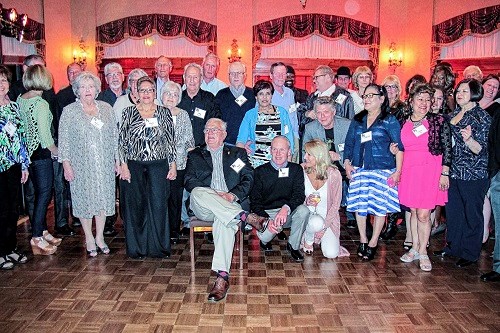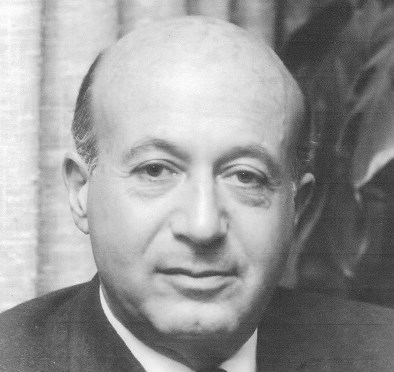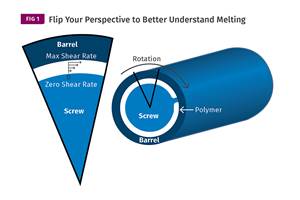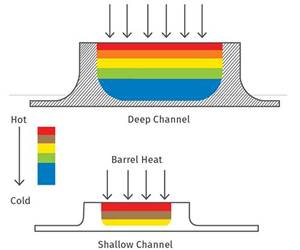Reunion Party Celebrates World’s First Thermoformer
In one room, several centuries of experience at the granddaddy of all thermoformers.
In one room, several centuries of experience at the granddaddy of all thermoformers.
It’s not every day that a reporter gets invited to someone else’s family reunion. In this case, the “family” was about 50 former employees of Plastofilm Industries, reputed to be the world’s first thermoforming company—perhaps even the inventor of the process—and by far the largest in its time, if not still today.

The gathering, held at the Herrington Inn & Spa in Geneva, Ill., in April, was planned over two years by an informal committee of six Plastofilm “alumni,” but the driving force was Tony Beyer, who started there as a toolmaker in 1973 and worked his way up to plant manager before he left in 1991 to start his own thermoforming company, Tek Pak, in Batavia, Ill. The attendees included fathers and sons, husbands and wives, who had worked together at Plastofilm before its demise in 2008. Together, they represented several centuries of thermoforming experience, which later seeded a score of other thermoforming machinery, tooling, and processing companies, some of them founded by the Plastofilm extended family.
Plastofilm was started in 1941 by George Wiss (pictured below), an engineer who emigrated from Hungary in 1939. He started out with a contract from the U.S. Army to wash out and recover the silver oxide from sheets of photographic film of bombing missions during World War II. He was left with a pile of clear cellulose acetate butyrate sheets to discard and wondered if they could be reused in some way. That reportedly led to the invention of the first vacuum forming machine and process (Wiss was co-author of a patent). The first application was boxes to hold corsages for big bands like Glenn Miller’s that played on Chicago’s Navy Pier.

Based in Wheaton, Ill., Plastofilm started up its first thermoforming production line in 1957 and then the first high-speed, inline continuous forming machine (reputedly another original invention) in 1959. Plastofilm started its own sheet extrusion in 1966. By 1996, the firm had grown to five plants on three continents, 550 employees, and $280 million in annual revenue. Two of its biggest “firsts” were pioneering medical thermoforming in the 1960s and continuous forming of carrier tapes for automated assembly of electronics in 1981. But after Wiss retired, the firm was sold and resold to a succession of buyers, until its 大象传媒 dwindled away and the remaining equipment was sold off—much of it to Tek Pak.
The theme of the party was “Getting the band back together,” enlivened by the beat of The Blues Brothers Revue. The choice of bandwas not accidental: As Beyer explained it, John Belushi (one of the original Blues Brothers musical duo with Dan Akroyd) was a native of Wheaton, Ill., and worked at Plastofilm briefly one summer, because his mother was employed there.
There were other intriguing details to be learned at the party. For example, Beyer worked as a toolmaker on packaging trays for early products from Apple Computer. One of Plastofilm’s salesmen worked together with Apple founder Steve Jobs on those projects. Another Plastofilm salesman worked with Bill Gates on thermoformed packaging when Microsoft had fewer than 50 people, Beyer recalled at the reunion party. “Lots of neat stories from those Plastofilm days,” he said.
For more on the Plastofilm reunion, look for my Close Up article in the June issue of Plastics Technology.
Related Content
Understanding Melting in Single-Screw Extruders
You can better visualize the melting process by “flipping” the observation point so the barrel appears to be turning clockwise around a stationary screw.
Read MoreShredding Thin Film: How to Do It Right
While many processors recoil at this task, a little know-how in shredding equipment, processing, and maintenance should add the necessary confidence.
Read MoreThe Importance of Barrel Heat and Melt Temperature
Barrel temperature may impact melting in the case of very small extruders running very slowly. Otherwise, melting is mainly the result of shear heating of the polymer.
Read MoreHow Polymer Melts in Single-Screw Extruders
Understanding how polymer melts in a single-screw extruder could help you optimize your screw design to eliminate defect-causing solid polymer fragments.
Read MoreRead Next
Beyond Prototypes: 8 Ways the Plastics Industry Is Using 3D Printing
Plastics processors are finding applications for 3D printing around the plant and across the supply chain. Here are 8 examples to look for at NPE2024.
Read MoreFor PLASTICS' CEO Seaholm, NPE to Shine Light on Sustainability Successes
With advocacy, communication and sustainability as three main pillars, Seaholm leads a trade association to NPE that ‘is more active today than we have ever been.’
Read MoreLead the Conversation, Change the Conversation
Coverage of single-use plastics can be both misleading and demoralizing. Here are 10 tips for changing the perception of the plastics industry at your company and in your community.
Read More















